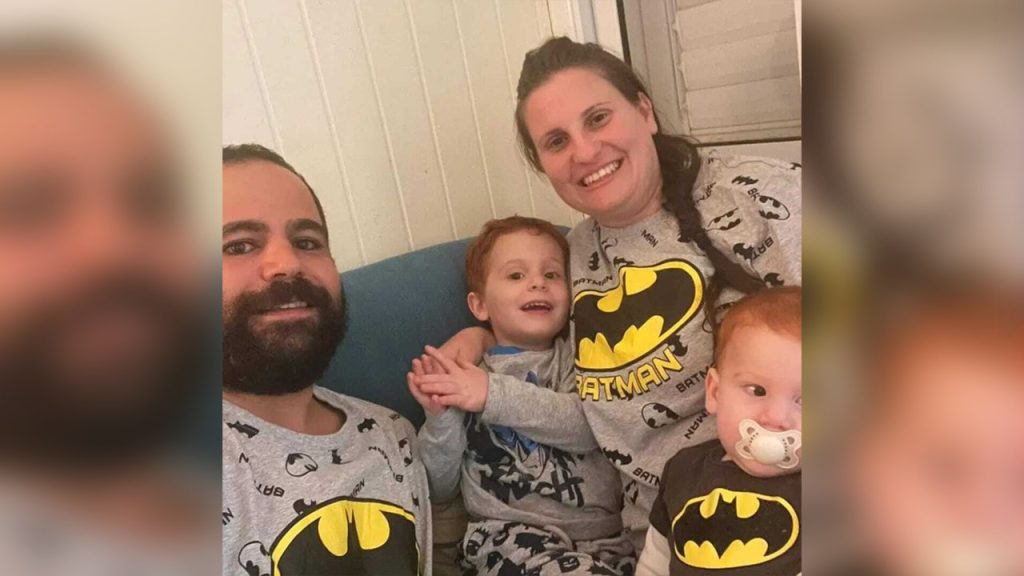The return of Yarden Bibas to Israel after 482 days of Hamas captivity has ignited a mixture of relief and anguish. While the nation celebrates his liberation, the joy is tempered by the agonizing uncertainty surrounding the fate of his wife, Shiri, and their two young children, Ariel and Kfir, who remain hostages in Gaza. The IDF has expressed grave concerns about their well-being, leaving the family and the nation in a state of suspended grief. This complex emotional landscape underscores the devastating human cost of the ongoing conflict and the enduring power of hope amidst despair.
Bibas’ release, alongside American-Israeli Keith Siegel and French-Israeli Ofer Kalderon, marks the fourth round of hostage releases under the first phase of the Israel-Hamas ceasefire. The liberation process, however, has been far from smooth. Previous releases were marred by chaotic scenes of crowds mobbing the returning hostages, prompting Israeli Prime Minister Benjamin Netanyahu to demand guarantees for their safe passage. The latest release unfolded with a marked difference, reflecting a shift towards a more controlled and dignified handover procedure. This change underscores the sensitive nature of these releases and the ongoing efforts to mitigate the potential for further trauma and exploitation.
The Bibas family’s ordeal has become a poignant symbol of the horrors inflicted by Hamas during the October 7 attacks. Images of Shiri clutching her two red-headed children, Ariel and Kfir, became emblematic of the indiscriminate brutality of the attacks and the devastating impact on innocent families. The global campaign for their release, often symbolized by the color orange in reference to the children’s vibrant hair, has highlighted the plight of hostages and underscored the urgent need for their safe return. Ariel, now five years old, and Kfir, who recently marked his second birthday in captivity, represent the youngest hostages still held in Gaza, their innocence a stark contrast to the harsh realities of their confinement.
Hamas’ use of hostage videos, including one featuring a distraught Yarden Bibas, further exemplifies the psychological terror employed by the organization. While Hamas claimed in the video that Shiri and the children had been killed, they subsequently included them on the list of 33 hostages slated for release in the first phase of the ceasefire, injecting a flicker of hope into an otherwise bleak situation. This manipulation of information and emotional exploitation underscores the psychological toll exacted on hostages and their families, highlighting the cruelty inherent in Hamas’ tactics.
The release of Yarden Bibas, while a cause for celebration, is a stark reminder of the incomplete nature of the family’s reunion. His return brings solace but also amplifies the anguish of separation, leaving the family and the nation holding their breath for news of Shiri, Ariel, and Kfir. The ongoing efforts to secure their release remain paramount, with national leaders and advocacy groups vowing to continue the fight until every hostage is brought home. The Bibas family’s story serves as a powerful testament to the enduring bonds of family and the unwavering hope for reunification in the face of unimaginable adversity.
As of Saturday, 79 hostages remain in Gaza, a somber statistic that underscores the magnitude of the ongoing crisis. Among them, 35 have been declared dead, their bodies still held by Hamas, adding another layer of complexity to the already fraught negotiations. Keith Siegel’s release marked the first for an Israeli-American, but six American citizens remain in Gaza, only two of whom are believed to be alive. The plight of these individuals and the countless families affected by the conflict serve as a constant reminder of the human cost of war and the urgent need for a lasting resolution that prioritizes the safety and well-being of all.

